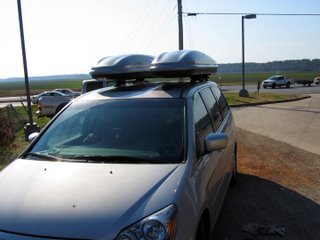A Recent heteroclitus mtDNA Sequence Bender
I've been flailing about this week trying to do five or more things at once. Over the weekend I had the chance to sit down and re-read some papers from the 1990's about Fundulus heteroclitus mtDNA diversity, the papers that set me off on this project in 1995-96. Now that Kris is making serious headway with cleaning up our sequences and plugging them into a phylogenetic tree I wanted to refresh my memory about the details of heteroclitus population structure. One key point I hadn't thought about for years (!) is that due to historical patterns of separation going back ~500,000 years, the northern subspecies, F. h. macrolepidotus, has markedly lower genetic diversity than the southern subspecies, F. h. heteroclitus, no matter how you measure it. That's generally consistent with our preliminary results, in which Cape Cod fish have little genetic differentiation (although Nantucket fish show more differences than might be expected, the whole point of this project). Our odd result to date is that Virginia Beach fish are their own distinct clade, not especially close to either northern or other southern clades. As we clean up other sequences and plug them into this growing tree I'm really curious to see how this Virginia Beach clade ends up.
We've also written some other researchers who have worked with this species, asking them for their heteroclitus mtDNA cyt-b sequences that aren't in the GenBank repository for one reason or another. Axel Meyer in Konstanz, Germany is alleged to have a New York sequence we'd dearly love to have, and a group in the Department of Environmental Science at the Virginia Institute of Marine Sciences seems to have sequences from Virginia and New Bedford, MA, fish. If anyone else is in possession of this sequenced gene from heteroclitus please contact me. I know that it's a small world of people who might have this, but if you're out there... write!




